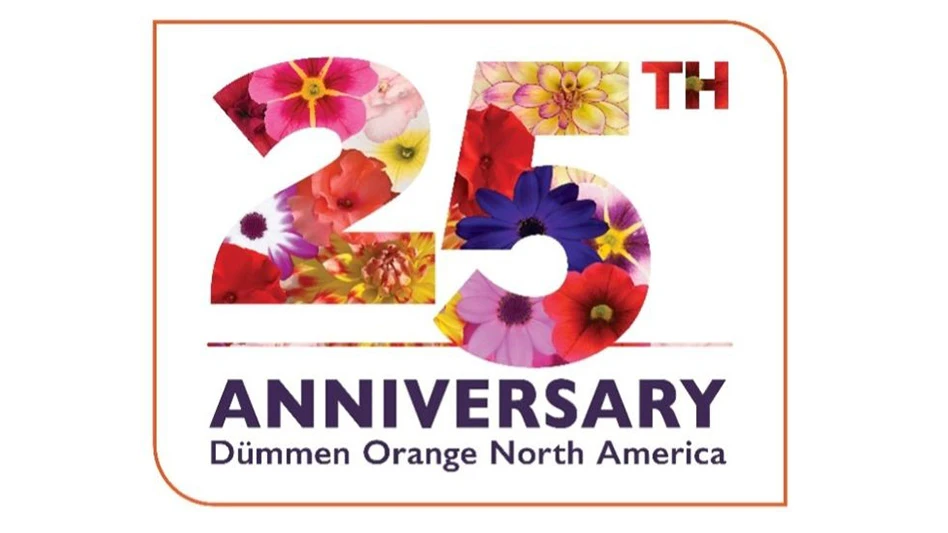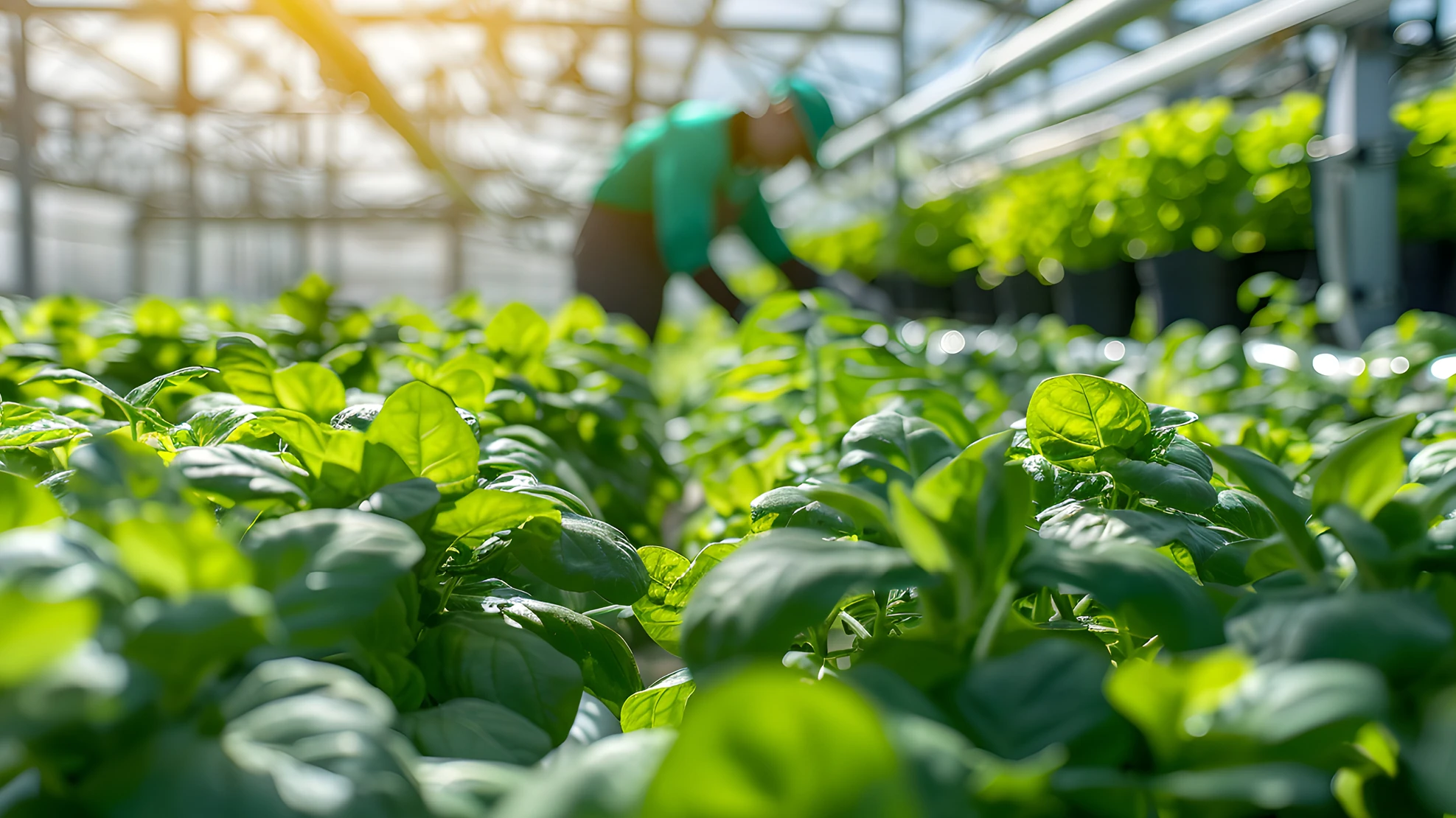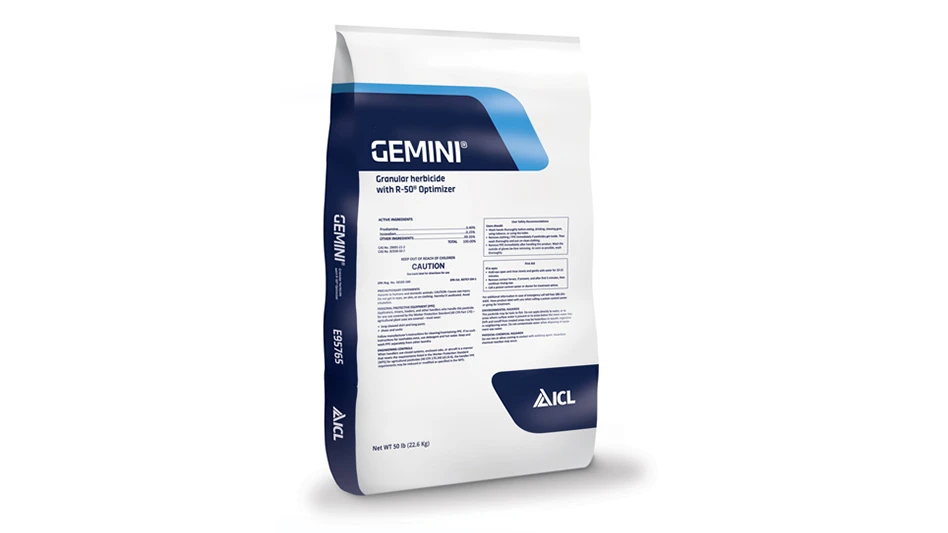

Spring bedding plant season is a race to produce high-quality, flowering finished containers quickly to allow for successive crop turns. While there are a number of factors contributing to what makes a plant “high-quality” and when it is finished, developed and developing branches filling in the container help bulk-up plants to fill in containers and result in an appealing plant appearance.
Starting in propagation and throughout finishing, there are several approaches to improving branching for annual bedding plants.
The science behind branching
In plants, apical dominance and branch development are ultimately controlled by the ratio of auxin to cytokinin, as well as the ratio of auxin to ethylene.
When the ratio of auxin is high relative to cytokinin or ethylene, dominance is maintained and branch development is suppressed. Alternatively, when auxin concentration relative to cytokinin or ethylene is low, apical dominance is released and branches develop. Actively growing shoot or stem tips can maintain apical dominance and suppress the development of branches, by forming auxin and transporting it downwards, which keeps the concentration of auxin higher near those axillary buds which may otherwise develop into branches. As stems grow taller or longer, the concentration of auxin at the base of the stem is lower, and branches start to develop. As we review the different ways to promote branching, each strategy comes back to altering the ratios auxin:cytokinin or auxin:ethylene in one way or another.
The most common method to increase branching is to pinch crops. When pinched, the site of auxin production is removed and the ratios of auxin:cytokinin and auxin:ethylene decrease; apical dominance is lost and axillary buds can develop into branches. While we call it pinching, in practice, annual bedding plants are not simply pinched in some cases — in many cases, they are sheared using some sort of hand shears or power tool such as a hedge trimmer.
The high density of plants — whether ~100-cell liner trays from propagation, shuttle trays with ten 4-inch containers or hanging basket with a half-dozen rooted liners — makes pinching individual stems impractical and shearing much more efficient. It’s not just the plant density that makes shearing an effective branching strategy, it is also the growth habit of many annual bedding plants.
Upright plants with a strong central leader like dahlias may be “pinched” in the traditional sense or have a single stem tip removed to promote branching. However, many annual bedding plants have a prostrate or spreading growth habit with multiple stems, and shearing is the most efficient means of removing all the shoot tips. No matter the stage of pruning or shearing, be sure to frequently sanitize all tools.
Although shearing is an effective means of promoting branching, the process itself can be a time- and labor-intensive one. An effective alternative to shearing is the use of plant growth regulators (PGRs). Remember, branching is controlled by the ratios of auxin:cytokinin and auxin:ethylene. In shearing, we reduce the ratio of auxin to cytokinin and ethylene by reducing auxin production in the plant.

Chemistry-assisted branching
Alternatively, we can lower the ratio of auxin to cytokinin and ethylene not by reducing the concentration of auxin, but by increasing the concentration of cytokinin or ethylene through PGR applications.
Ethephon (Florel, Collate) is an ethylene-generating PGR. While it can be used to inhibit stem elongation, flower abortion and fruit ripening, it also promotes branch development without pinching. Since ethephon is a “Swiss Army knife” PGR, it is important to always be mindful about the different effects on plants when used to improve annuals. Starting in cutting propagation, ethephon can be used to start to promote branching. Since ethephon also induces flower abortion, this can also benefit those vegetatively propagated crops developing flowers prematurely in propagation. Unfortunately, ethylene can suppress root development — the central goal of propagation.
Do not apply ethephon too early in propagation and allow roots to form and start to grow before applications; stage 3 during the root development period is a good time to start. Secondly, watch the volume of solution applied. The recommended application volume for PGR sprays is 2 quarts of solution per 100 square feet, but some growers apply PGRs “to runoff.” Do not apply ethephon solutions to runoff in propagation, and consider applying a bit less than 2 quarts per 100 square feet.
Once plants are transplanted into containers for finishing, ethephon can be applied to promote branching. While the height-suppressing activity of ethephon will almost certainly be welcome, you still need to consider the flower aborting effects. The standard recommendation has been to stop applying ethephon six weeks before flowering is desired.
However, for spring annuals in smaller containers (i.e. 4-inch pots), six weeks may exceed the total time for finishing. In my experience with many of the new vegetatively propagated annual cultivars, the cutoff time for applications does not need to be six weeks; three to four weeks is usually sufficient, which makes applications seven to 10 days after planting possible, and the full 2 quarts per 100 square feet can be used at this time.
The floriferous nature of new cultivars, especially for the multi-stemmed prostrate or spreading cultivars, allows for this shorter time from ethephon application to flowering. Please note, this shorter (three- to four-week) timeframe is based on personal experiences and observations, not careful experimentation, so proceed with caution. Start by spraying solutions with concentrations between 250 and 500 ppm to determine what works best for you.
Another PGR which can be used to promote branching without pinching or shearing spring annuals is benzyladednine (Configure). Benzyladenine (BA) is a type of cytokinin. When applied to plants, it reduces the ratio of auxin:cytokinin by increasing cytokinin concentrations relative to auxin. Be sure not to confuse Configure, a BA product, with Fascination or Fresco, a product with both BA and gibberellic acid (GA).
Sponsored Content
Labor that Works
With 25 years of experience, Leadpoint delivers cost-effective workforce solutions tailored to your needs. We handle the recruiting, hiring, training, and onboarding to deliver stable, productive, and safety-focused teams. Our commitment to safety and quality ensures peace of mind with a reliable workforce that helps you achieve your goals.
Sponsored Content
Labor that Works
With 25 years of experience, Leadpoint delivers cost-effective workforce solutions tailored to your needs. We handle the recruiting, hiring, training, and onboarding to deliver stable, productive, and safety-focused teams. Our commitment to safety and quality ensures peace of mind with a reliable workforce that helps you achieve your goals.
Sponsored Content
Labor that Works
With 25 years of experience, Leadpoint delivers cost-effective workforce solutions tailored to your needs. We handle the recruiting, hiring, training, and onboarding to deliver stable, productive, and safety-focused teams. Our commitment to safety and quality ensures peace of mind with a reliable workforce that helps you achieve your goals.
Sponsored Content
Labor that Works
With 25 years of experience, Leadpoint delivers cost-effective workforce solutions tailored to your needs. We handle the recruiting, hiring, training, and onboarding to deliver stable, productive, and safety-focused teams. Our commitment to safety and quality ensures peace of mind with a reliable workforce that helps you achieve your goals.
Unlike ethephon, BA does not have the same variety of effects on plants — it is primarily going to promote branching. While it can have slight growth-suppressing effects or short flowering delays on annuals, they are not pronounced and are usually the effect of source-sink relationships, whereby the enhanced branch growth and development competes with the main stem and flowers. Like ethephon, you can start to apply BA during propagation, but it can have the same root-inhibiting effects, so the same precautions about avoiding runoff and lower spray volumes apply for BA. Similarly, once plants are transplanted into containers for finishing, 2 quarts per 100 square feet should be used as a target spray volume and, while concentrations as low as 50 ppm can be effective on some species, up to 500 ppm BA can be applied to annuals.
Containerized annual bedding plants look better and can fill in containers more quickly when branching is improved. While shearing or pinching gets the job done, ethephon or BA can substitute for pinching to improve branching and save labor. Keep the best-management practices for these different PGRs in mind, and you can find success in the spring with these tools.

Explore the January 2022 Issue
Check out more from this issue and find your next story to read.
Latest from Greenhouse Management
- Flexible fungicides
- Super Charged Moon Juice from Moon Valley Nurseries now available nationally
- 2025 Proven Winners Horticulture Scholarship applications now open
- How to improve inventory and shipping management in the greenhouse
- Leading Women of Horticulture: Anna Ball, Ball Hort, and Terri McEnaney, Bailey Nurseries
- GM CEA HERB Part 2: A guide to increasing the sowing density of culinary herbs
- GM CEA HERB Part 1: Best practices for producing culinary herbs in controlled environments
- USDA fires experts on invasive pests, including Asian citrus psyllid, chilli thrips






